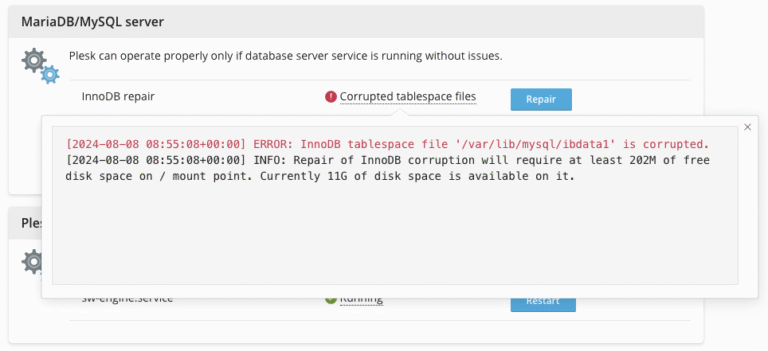Private cloud computing architecture is a version of cloud computing where a single user or organization can access the actual cloud infrastructure. The user might own the data center and server, or a third party might physically house and maintain them.
Different Types of Cloud Architecture
Public
A public cloud is what most think of when they think about cloud computing. The end user does not own the servers and data centers that run and support the cloud. They may be part of a large, international company offering cloud hosting and data services to other companies and members of the public, and your cloud probably shares server space with those belonging to many others. This is an efficient and scalable setup and is usually the least expensive. It is also the least secure.
Private
A private cloud is exactly what it sounds like – private. You either own the server or have paid for exclusive access to one. This can be more expensive, as you are either renting or maintaining the entire server, regardless of how much of its capacity you consume. You are also generally expected to do upgrades, patches, and software management on your private server yourself, even if it is located on third-party premises. This, and the exclusivity of the platform, can have major security benefits, though.
Hybrid
A hybrid cloud is a combination of a private cloud (which often handles your most crucial or sensitive data) and public cloud resources. While they can’t be on the same server, hybrid cloud architecture is set up so that it can be managed as a unit when convenient. This architecture lets you host your least sensitive data cheaply but maintains the security and exclusivity of your important stuff.
Multi-Cloud
A multi-cloud setup is like a hybrid cloud, only more so. It typically sees a single organization using a constantly changing mix of private and public clouds, hosted on-premises and off, to give them just the right balance of security, control, access, scalability, and cost.
What Is a Private Cloud?
So what does all that mean to you as a user? From your perspective, a private cloud is your environment. Your organization has complete control over what is on it, and only you have responsibility for maintaining it, regardless of whether you own it yourself or lease it from a provider.

Are There Different Kinds of Private Cloud Architecture?
Certainly! The most important three are outlined below:
Virtualization
You can run a virtual private cloud that is hosted within a public cloud as well. This kind of hybrid arrangement relies on the public cloud provider to isolate your cloud from everyone else. You still have sole control and responsibility over the private cloud, but it often shares server space like a public cloud.
Management
Another modified version of the private cloud, a managed private cloud, sees your cloud run exclusively on a dedicated server. However, a third party is responsible for maintaining both its hardware and the integrity of its software.
Automation
Cloud automation is something different entirely. This is the process of managing the server environment automatically. An automated cloud handles scaling, the configuration of resources, and provisioning with little or no human oversight. An automated private cloud does the same thing for your private cloud environment.
How Does Private Cloud Work?
Virtualization is a critical component of private cloud computing. This practice enables IT organizations to pool resources from multiple servers and creates virtual replicas of operating systems, storage devices, networks, and more in an isolated environment within the cloud – to provide greater efficiency while maintaining security for select organizations not accessible by the general public.
Private cloud servers offer organizations personalized and secure computing environments, ideal for mission-critical tasks. Multiple sources pool resources to create an isolated virtualization space, keeping each organization’s data safe and separate from any other user group.
The management of private cloud servers depends on their official ownership, which can be maintained in-house or hosted remotely by a professional cloud provider. Regardless, the decision ultimately boils down to who controls these critical environments and assets.
Different Types of Private Clouds
So how does a private cloud work, and how does the service we offer operate? That all depends on the type of setup you decide on. Most organizations exploring their private cloud options are interested in either an infrastructure-as-a-service (IaaS) or a platform-as-a-service (PaaS) model. We’ll talk about each below.
Private Clouds for Infrastructure-as-a-Service (IaaS)
IaaS is a model where a provider supplies its users with an entire set of computing infrastructure, typically remotely, and maintains it for them. This infrastructure can be ideal for running a private cloud, and combining a managed private cloud with provided infrastructure is the perfect choice when you need high performance but can’t support private cloud architecture on-site.
Private Clouds for Platform-as-a-Service (PaaS)
PaaS sees you provisioning, running, and managing a computing platform, such as a server, which is located off-site. It is suitable for public, private, and hybrid cloud applications.
Managed Private Cloud Benefits
The advantages of a managed private cloud architecture are clear – you get the control and security of a private cloud without having to maintain an entire server using in-house resources. For example, Liquid Web’s Managed Private Cloud offers enterprise-level features and functionality to small and midsize businesses at affordable prices.
Final Thoughts
What makes private cloud architecture private is the access to the data on the server. Only your organization can move anything onto or off of the server, making the entire cloud your playground. Of course, you are responsible for maintaining its security as well, so the extent to which it truly stays private and secure is up to you.
Contact us to learn more about what you can do with a private cloud.





